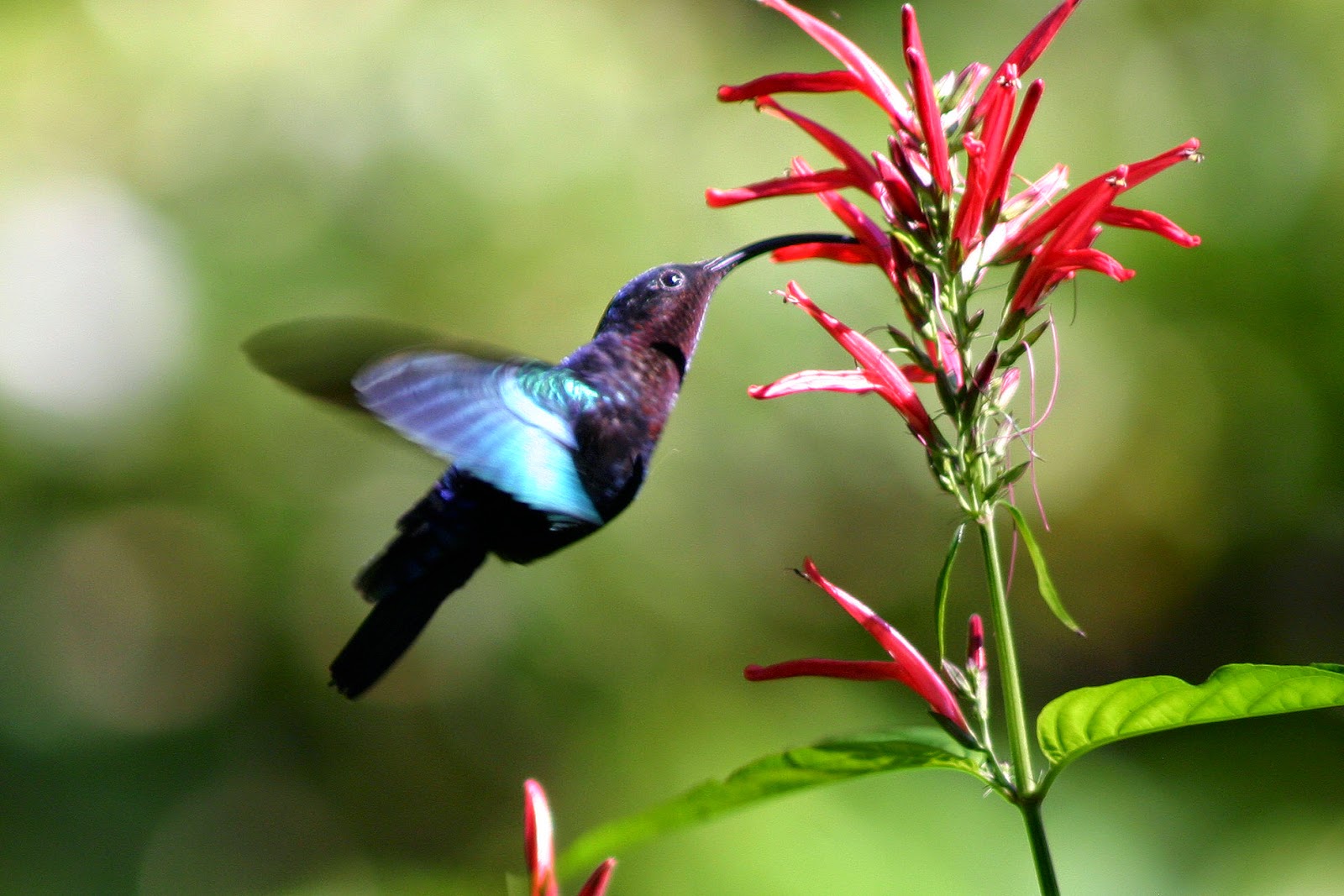 |
| via wikimedia commons |
perched in safe places. So keep that in mind when trying to attract the little guys.
Food
When thinking of plants to attract and feed hummingbirds it's useful to keep in mind the shape of their beaks. Hummers prefer conical or trumpeted flowers.
Shrubs like Azaleas or Honeysuckle are ideal since, when full size, they provide the perfect place for the little guys to rest when not eating.
Supplementing your flowers with feeders will allow you to support a bigger hummingbird population as well as giving them somewhere to feed when their favorite flowers begin to die back. Like butterflies, they also appreciate offerings of fresh fruit from time to time.
Water
Hummingbirds get all the water they need to drink from the nectar they eat. They do, however, still need to bathe and clean themselves.
Traditional birdbaths are too deep for them. They'll need something a bit shallower, with perches in the sun where they can dry themselves and preen. Some people place rocks in their birdbaths, creating shallow spots where the tiny birds can sit and bathe themselves.
Another option is to set up a water mister with a gentle spray near some plants that your hummers like to visit. They'll be more than happy with rubbing against the wet leaves and, if the mist is gentle enough, they may fly through the water or hover in it to get clean.
Shelter
Trees and Large shrubs are the perfect shelter for these tiny birds. As long as there are plenty of branches and foliage to cover them from the elements and predators, they'll be happy.
Nesting
These little guys are migratory, spending most of the cold winter months down south in the Gulf of Mexico. Which means, unfortunately, that the majority of backyard habitats won't get the chance to try and spot hummingbird nests.
Those of you that do live in warmer regions, still might have a hard time spotting the minuscule nests. Hummingbirds themselves are so tiny, their nests are barely large enough to accommodate whichever parent is currently warming the eggs.
Nests are well camouflaged and often look like little more than a knot in between two branches. These nests will be made in their favorite shrubs and trees, high off the ground, and out of the wind. They generally prefer building their nests in areas that stay cool since the eggs will not hatch if they get too hot.
Wrapping up
Watching a hummingbird at a feeder is always a lot of fun, and it doesn't take much to get one to visit you. It's been estimated that in both the United States and Canada there's not a single square mile that's not visited by hummingbirds at least once each year.
So plant your flowers, hang out your feeders and keep an eye out.

No comments:
Post a Comment